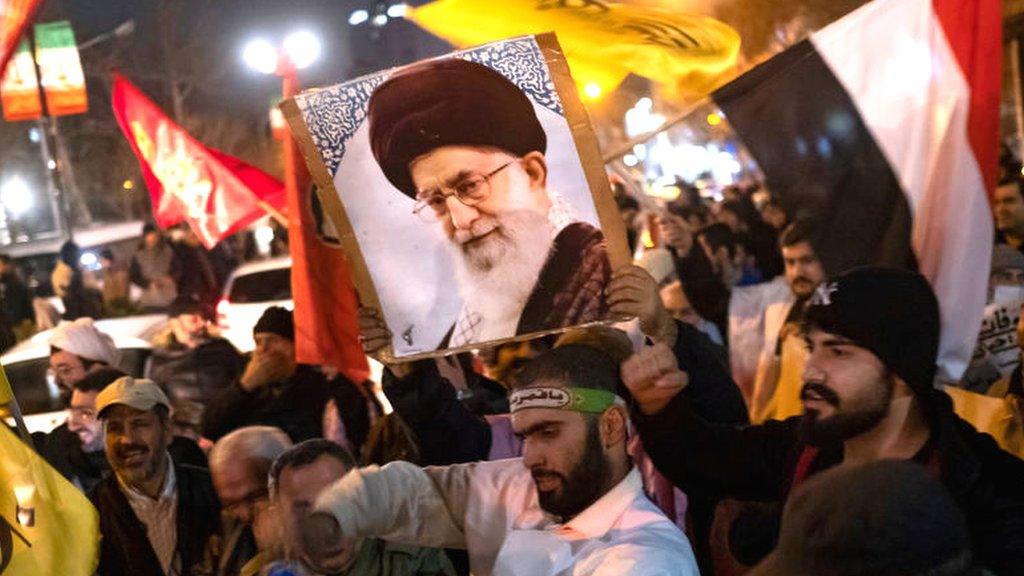Pakistan-Iran strikes: Where is Balochistan and why is it being targeted?
- Published

Security has been ramped up in Balochistan, following an Iranian missile strike at the Pakistan-Iran border
Balochistan is Pakistan's largest province and although it has more resources than other provinces, it is the least developed.
The name Balochistan can also be used to refer to a wider area that includes land in Iran and Afghanistan. In the past week, both Iran and Pakistan have launched strikes across each other's borders targeting militants in the region.
To understand the escalation in fighting, here's a closer look at Balochistan, which has a distinct cultural and historical identity.
Where is Balochistan and why is it important?
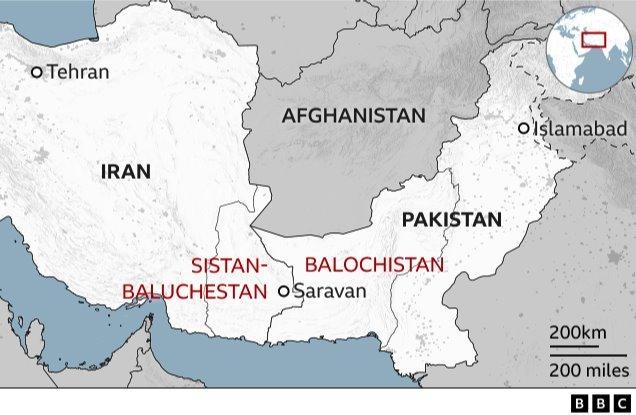
The largest part of Balochistan is in south-western Pakistan. The Pakistani province covers nearly 44% of the country's total land but is home to only 6% of the country's 241 million people. Its history is marred by insurgency, militancy, and human rights violations.
Sharing a volatile border with Iran and Taliban-controlled Afghanistan, Balochistan also boasts a vast coastline along the Arabian Sea.
The region derives its name from the Baloch tribe, which has resided here for centuries. Balochs remain the largest ethnic group, followed by the Pashtuns. Many Baloch people also live in the neighbouring Iranian province of Sistan-Baluchestan, as well as in Afghanistan.
Balochistan stands out as the richest Pakistani province in terms of natural resources, including gas and minerals and is a crucial part of a multi-billion dollar project funded by China called the China Pakistan Economic Corridor (CPEC).
The project is part of Chinese President Xi Jinping's Belt and Road Initiative, with the deep-sea port in the city of Gwadar, near the Gulf of Oman, seen as a vital checkpoint.
China is also involved in mining projects here and the construction of an international airport in Gwadar, which insurgent groups in Pakistan fiercely oppose.
A Canadian mining company, Barrick Gold, holds a 50% stake in a Balochistan mine called Reko Diq, which is considered to be one of the world's largest underdeveloped sites for copper and gold.
What's behind the unrest?
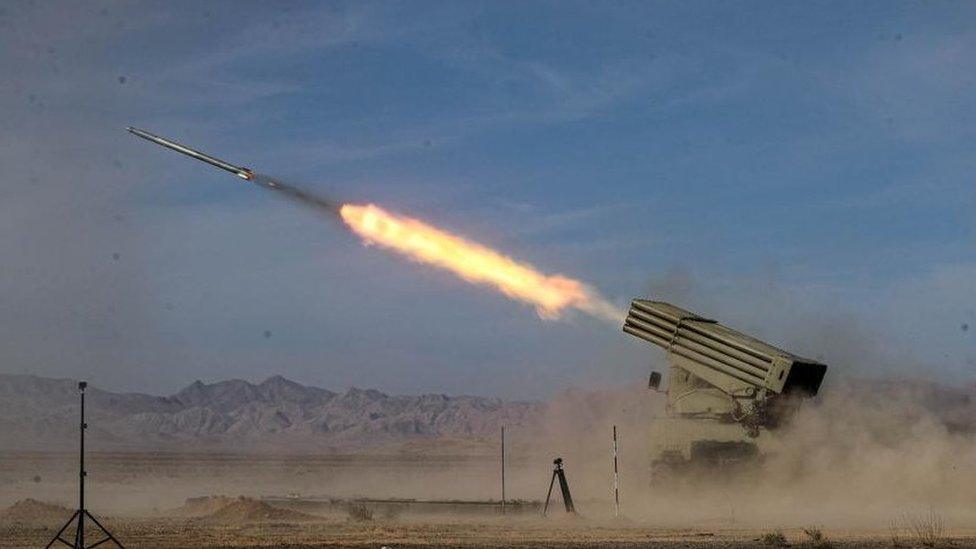
Iranian missiles - seen here during a training drill - have hit Pakistan
Local groups in both Pakistan and Iran are part of a decades-long struggle for greater autonomy in Balochistan.
Recent cross-border tensions escalated with Iran's attack on Pakistan on 16 January, which Pakistan said killed two children. Pakistan retaliated with a missile strike inside Iranian territory, which Iran says killed nine people.
Iran claimed it was targeting Jaish al-Adl, a militant group active against Iran, while Pakistan said it was aiming at the "hideouts" of two militant groups inside Iran, the Balochistan Liberation Army (BLA) and the Balochistan Liberation Front (BLF).
Pakistan's strikes were the first external land attack on Iran since the 1980s. It comes as tensions in the Middle East are high with the Gaza war intensifying. Iran also attacked targets in Iraq and Syria in the same week it attacked Pakistan.
The Pakistani province of Balochistan has long grappled with extensive exploitation of its resources and this has been a major catalyst for insurgency and unrest. Locals, particularly the Balochs, have blamed governments for exploiting and profiting from Balochistan's resources while neglecting the development of the region itself.
Resistance against the Pakistani government and the militant insurgency advocating for an independent state for the Baloch people began in 1948, after Pakistan's independence from the British Indian Empire.
Resistance continued in phases through the 1950s, 1960s, and 1970s. After a relatively quiet period, insurgent activities increased significantly from 2003 during the era of military ruler Gen Pervez Musharraf. He launched several counter-insurgency operations in Balochistan and a famous Baloch leader, Nawab Akbar Khan Bugti, was killed in one of the most controversial ones.
Bloody counter-insurgency operations and a crackdown in the province by Pakistan's army and intelligence agencies have reportedly seen tens of thousands of people disappear, allegedly picked up, tortured and killed with impunity by Pakistani security forces. Pakistan strongly denies these accusations.
According to the Voice for Baloch Missing Persons (VBMP), there are more than 7,000 people missing from Balochistan. But the Commission of Inquiry on Enforced Disappearances says there are just 454 active cases from Balochistan as of October 2023.
Pakistan's interim prime minister recently said in an interview with the BBC that the number was "exaggerated", claiming there are only 50 missing people in Balochistan.
Some of these cases are with the Supreme Court and a large group of women and family members have been protesting in Islamabad, demanding people are returned and an end to kidnappings and killings in the region.
Which militant groups operate in Balochistan?
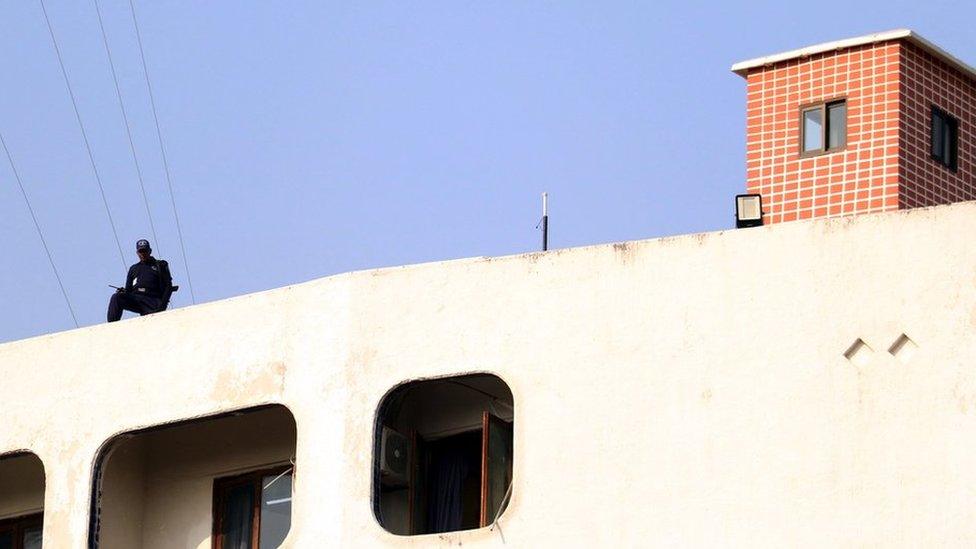
A security officer keeps watch at the Pakistani Foreign Ministry building in Islamabad, Pakistan
Various militant groups have operated in the province but two remain highly active in the region - the BLF and BLA. These groups operate against Pakistan inside Pakistani territory although Pakistan claims they maintain hideouts primarily in Iran and sometimes in Afghanistan too.
Pakistan accuses the Iranian government of offering safe havens to the leaders and militants of these groups, which Iran denies. Pakistan also claims that India financially supports some factions in Balochistan - allegations India denies.
In the past two years, the Pakistani government has expressed heightened concern over reports of joint attacks by the BLA and the Pakistani Taliban (TTP), an umbrella organisation of various Islamist armed militant groups operating along the Afghan-Pakistani border.
The BLA stands out as the militant group challenging the authority of Pakistan the most. Several Western countries, including the UK and US, have designated this group as a global terrorist organisation.
In recent years, the BLA has intensified its attacks, shifting from primarily targeting Pakistan's security forces in Balochistan to focusing on Chinese nationals involved in projects in the region.
Similar to other insurgent groups, the BLF frequently targets gas projects, infrastructure, and security posts in Balochistan. Since 2011, the group has actively carried out attacks against Pakistani security forces, foreign workers, government affiliates, and journalists.
Established in Syria in 1964, the BLF initially joined the Iranian Baloch Revolt, an insurgency of Baloch groups against the Iranian government. After five years of conflict, the group negotiated an end to the fight with the Shah of Iran. Subsequently, the BLF, along with other Baloch groups, turned against the Pakistani state, taking refuge in Afghanistan in the 1970s.
- Published18 January 2024
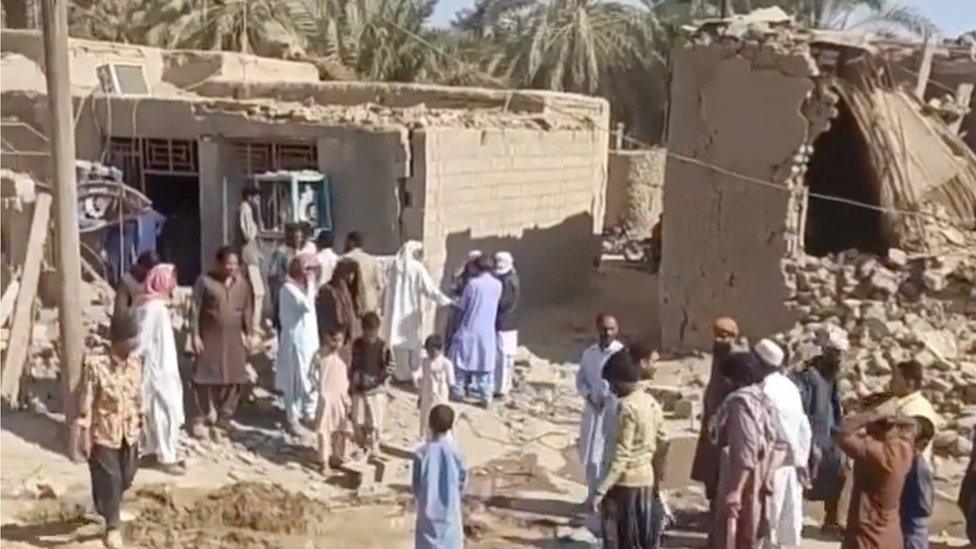
- Published18 January 2024
